DHI
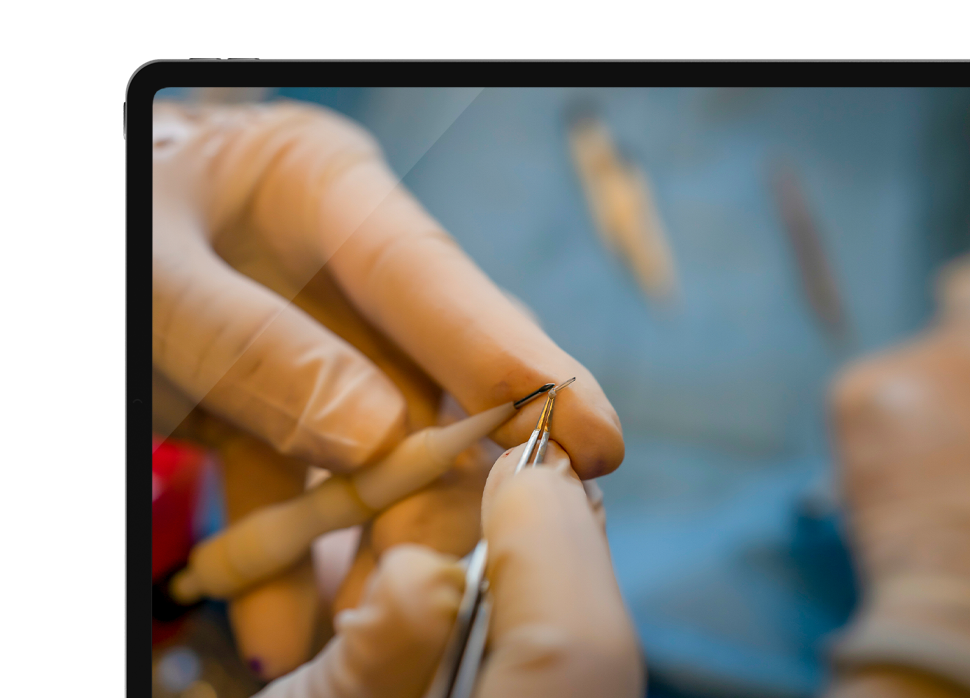
DHI (Implantation Directe de Cheveux)
La DHI (Implantation Directe de Cheveux) n'est pas une nouvelle technique. En fait, c'est une version améliorée de l'implantation de cheveux FUE, englobant les mêmes étapes procédurales et résultats. Dans une greffe de cheveux FUE, le médecin crée des canaux sur la zone receveuse à l'aide de lames en saphir et place les greffons dans les canaux ouverts. En revanche, la méthode DHI emploie un outil ressemblant à un stylo à bille pour insérer les greffons dans la zone receveuse sans créer de canaux. Cet outil s'appelle le stylo Choi. Examinons le processus de la DHI. Une greffe de cheveux DHI est réalisée à l'aide d'un stylo Choi lors de l'implantation. Ce dispositif compact, en forme de stylo à bille emboîtable, possède un revêtement extérieur en Téflon et est conçu pour résister à des températures allant jusqu'à 130 degrés Celsius. L'aiguille à l'extrémité du stylo est utilisée pour placer les greffons. L'aiguille ressemble à un injecteur mais est verticale, avec des extrémités dentelées. Les extrémités dentelées sont conçues de cette manière pour faciliter le placement des greffons de cheveux dans l'aiguille avant la greffe. Dans la technique de greffe de cheveux DHI, 4 à 6 stylos Choi sont utilisés, classés par couleur en rouge, bleu et blanc, selon la taille des greffons, qui sont classés comme épais, moyens et fins. Cette méthode se compose de trois étapes principales :
Étape 1 : Extraction des Follicules Pileux
Le processus commence par l'identification de la zone donneuse, généralement située à l'arrière ou sur les côtés du cuir chevelu, où les follicules pileux sont plus résistants à la chute. Un dispositif précis appelé micro-moteur est utilisé pour extraire les follicules pileux individuels sans causer de grandes plaies ou de cicatrices visibles. Chaque follicule est soigneusement extrait pour préserver son intégrité et garantir son efficacité pour la transplantation.
Étape 2 : Préparation et Conservation des Follicules
Immédiatement après l'extraction, les follicules sont placés dans une solution médicale spécialisée conçue pour maintenir leur vitalité et leur activité. Cette solution aide à réduire la déshydratation et augmente les chances d'une greffe réussie. Les follicules sont ensuite triés en fonction du nombre de cheveux par follicule (par exemple, cheveux simples, doubles ou multiples). Cette classification aide à la planification méticuleuse de la transplantation, garantissant que les follicules les plus appropriés sont sélectionnés pour chaque zone du cuir chevelu, en tenant compte de la densité des cheveux et de l'apparence naturelle.
Étape 3 : Chargement des Follicules dans les Stylos Choi et Implantation
Les follicules sont transférés de la solution dans le stylo Choi, un outil spécialisé équipé d'une aiguille très fine à son extrémité. Une équipe formée charge soigneusement chaque follicule dans l'aiguille, en prenant grand soin de ne pas endommager les follicules pendant le processus. Le spécialiste implante ensuite les follicules directement dans les zones cibles, en insérant l'aiguille à des angles et des profondeurs précis pour garantir une direction de croissance naturelle des cheveux. Chaque follicule est implanté individuellement, et une légère pression sur le stylo aide à insérer le follicule en douceur dans la peau sans avoir besoin de grandes incisions ou de coupures sur le cuir chevelu. Cette procédure est répétée jusqu'à ce que le nombre souhaité de follicules soit implanté, obtenant une couverture naturelle et uniforme des zones chauves. Il est crucial de souligner que, comme pour toute procédure, une greffe de cheveux DHI doit être réalisée par un expert qualifié pour s'assurer que chaque follicule est placé au bon angle, à la bonne profondeur et dans la bonne direction pour des résultats d'apparence naturelle. En outre, pour minimiser le risque de complications comme une infection ou des cicatrices.
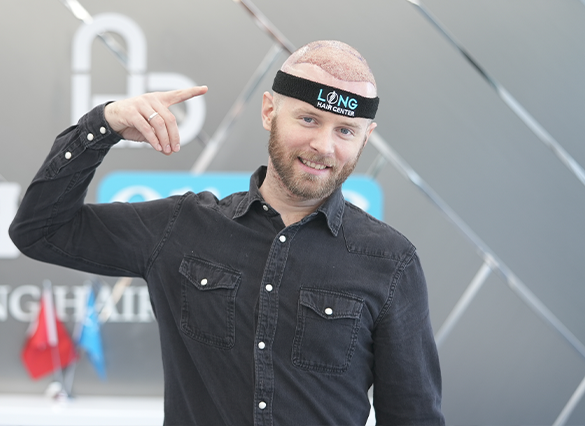
DHI (Implantation Directe de Cheveux)
La DHI (Implantation Directe de Cheveux) n'est pas une nouvelle technique. En fait, c'est une version améliorée de l'implantation de cheveux FUE, englobant les mêmes étapes procédurales et résultats. Dans une greffe de cheveux FUE, le médecin crée des canaux sur la zone receveuse à l'aide de lames en saphir et place les greffons dans les canaux ouverts. En revanche, la méthode DHI emploie un outil ressemblant à un stylo à bille pour insérer les greffons dans la zone receveuse sans créer de canaux. Cet outil s'appelle le stylo Choi. Examinons le processus de la DHI. Une greffe de cheveux DHI est réalisée à l'aide d'un stylo Choi lors de l'implantation. Ce dispositif compact, en forme de stylo à bille emboîtable, possède un revêtement extérieur en Téflon et est conçu pour résister à des températures allant jusqu'à 130 degrés Celsius. L'aiguille à l'extrémité du stylo est utilisée pour placer les greffons. L'aiguille ressemble à un injecteur mais est verticale, avec des extrémités dentelées. Les extrémités dentelées sont conçues de cette manière pour faciliter le placement des greffons de cheveux dans l'aiguille avant la greffe. Dans la technique de greffe de cheveux DHI, 4 à 6 stylos Choi sont utilisés, classés par couleur en rouge, bleu et blanc, selon la taille des greffons, qui sont classés comme épais, moyens et fins. Cette méthode se compose de trois étapes principales :


La méthode DHI comprend les étapes suivantes :
1-Conception de la ligne de cheveux.
2-Anesthésie.
3-Extraction des greffons.
4-Implantation des greffons à l'aide de stylos Choi.
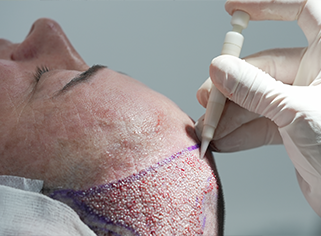

Avantages :
Placement précis des greffons : La DHI permet un contrôle précis sur l'angle, la direction et la profondeur de l'implantation des follicules pileux, ce qui donne une ligne de cheveux d'apparence naturelle.
Moins invasive : La DHI implique une manipulation minimale des greffons et ne nécessite pas la création de canaux sur les zones receveuses au préalable.
Pas de scalpel : La technique DHI n'implique pas de scalpels, ce qui entraîne moins de cicatrices et un temps de récupération plus rapide.
Taux de survie des greffons plus élevé : Comme les greffons sont implantés immédiatement après l'extraction, leur taux de survie peut être plus élevé par rapport aux techniques où les greffons sont stockés avant l'implantation.
Adapté à divers types de cheveux : La DHI peut être utilisée pour différents types de cheveux, y compris les cheveux bouclés ou ondulés, car l'implantation précise permet des résultats naturels.

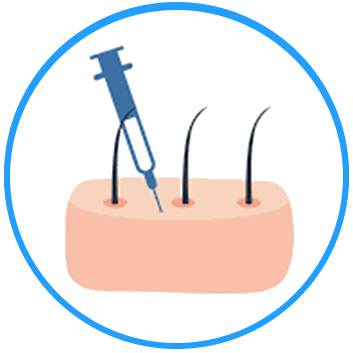
Inconvénients :
Technique unique : La technique d'Implantation Directe de Cheveux (DHI) est un peu plus complexe que les méthodes de base de greffe de cheveux, nécessitant des médecins et une équipe spécialisée avec une formation et des compétences spécifiques.
Quantité de greffons limitée : En raison de la nature sensible au temps de la procédure, la DHI pourrait ne pas être idéale pour de très grandes sessions de greffons en une seule séance..
Coût plus élevé : La technique avancée et l'expertise requise entraînent un coût plus élevé par rapport à d'autres méthodes de greffe de cheveux.
Durée prolongée du processus : La réalisation de la DHI prend du temps car chaque greffon doit être placé très soigneusement.
Résultats basés sur les compétences : L'efficacité de la méthode DHI dépend beaucoup des compétences et de l'expérience de l'équipe médicale. Cela peut entraîner différents niveaux de succès lorsque différents praticiens utilisent la méthode.
DHI
La DHI (Implantation Directe de Cheveux) n'est pas une nouvelle technique. En fait, c'est une version améliorée de l'implantation de cheveux FUE, englobant les mêmes étapes procédurales et résultats. Dans une greffe de cheveux FUE, le médecin crée des canaux sur la zone receveuse à l'aide de lames en saphir et place les greffons dans les canaux ouverts. En revanche, la méthode DHI emploie un outil ressemblant à un stylo à bille pour insérer les greffons dans la zone receveuse sans créer de canaux. Cet outil s'appelle le stylo Choi.
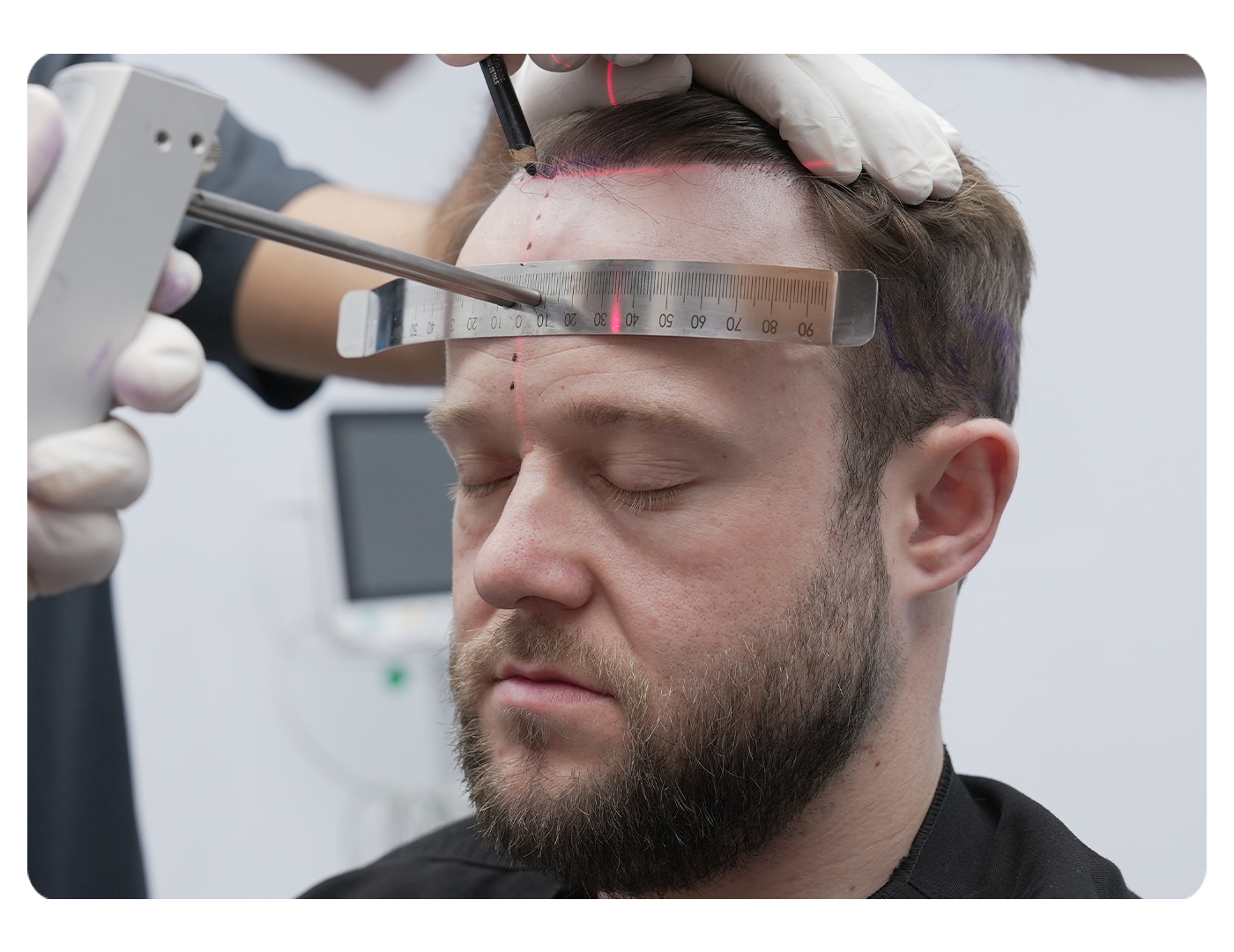

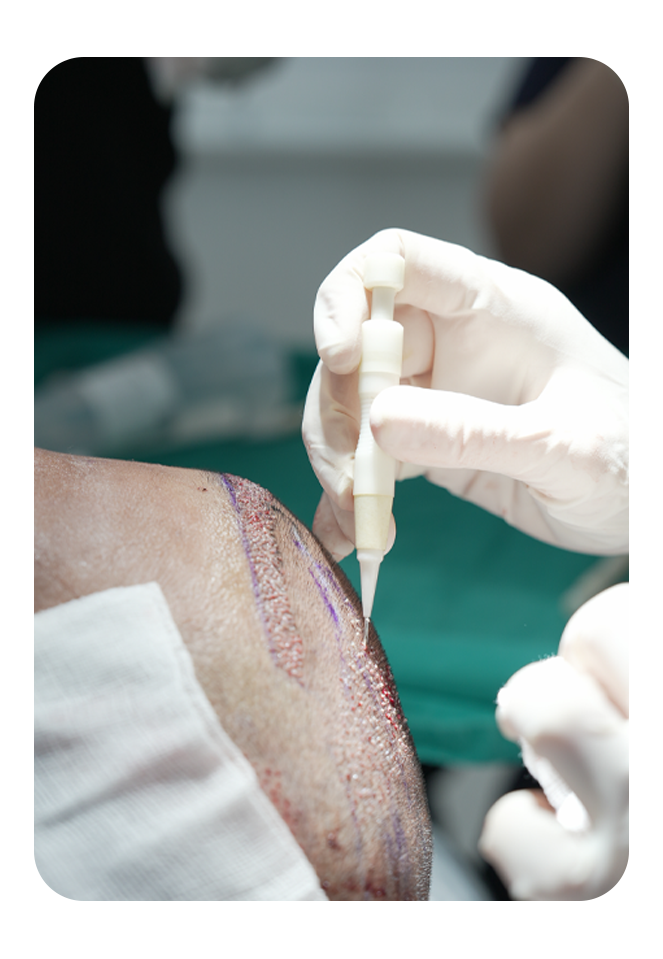
Examinons le processus de la DHI. Une greffe de cheveux DHI est réalisée à l'aide d'un stylo Choi lors de l'implantation. Ce dispositif compact, en forme de stylo à bille emboîtable, possède un revêtement extérieur en Téflon et est conçu pour résister à des températures allant jusqu'à 130 degrés Celsius. L'aiguille à l'extrémité du stylo est utilisée pour placer les greffons.
L'aiguille ressemble à un injecteur mais est verticale, avec des extrémités dentelées. Les extrémités dentelées sont conçues de cette manière pour faciliter le placement des greffons de cheveux dans l'aiguille avant la greffe.
- 1-Conception de la ligne de cheveux.
- 2-Anesthésie.
- 3-Extraction des greffons.
- 4-Implantation des greffons à l'aide de stylos Choi.
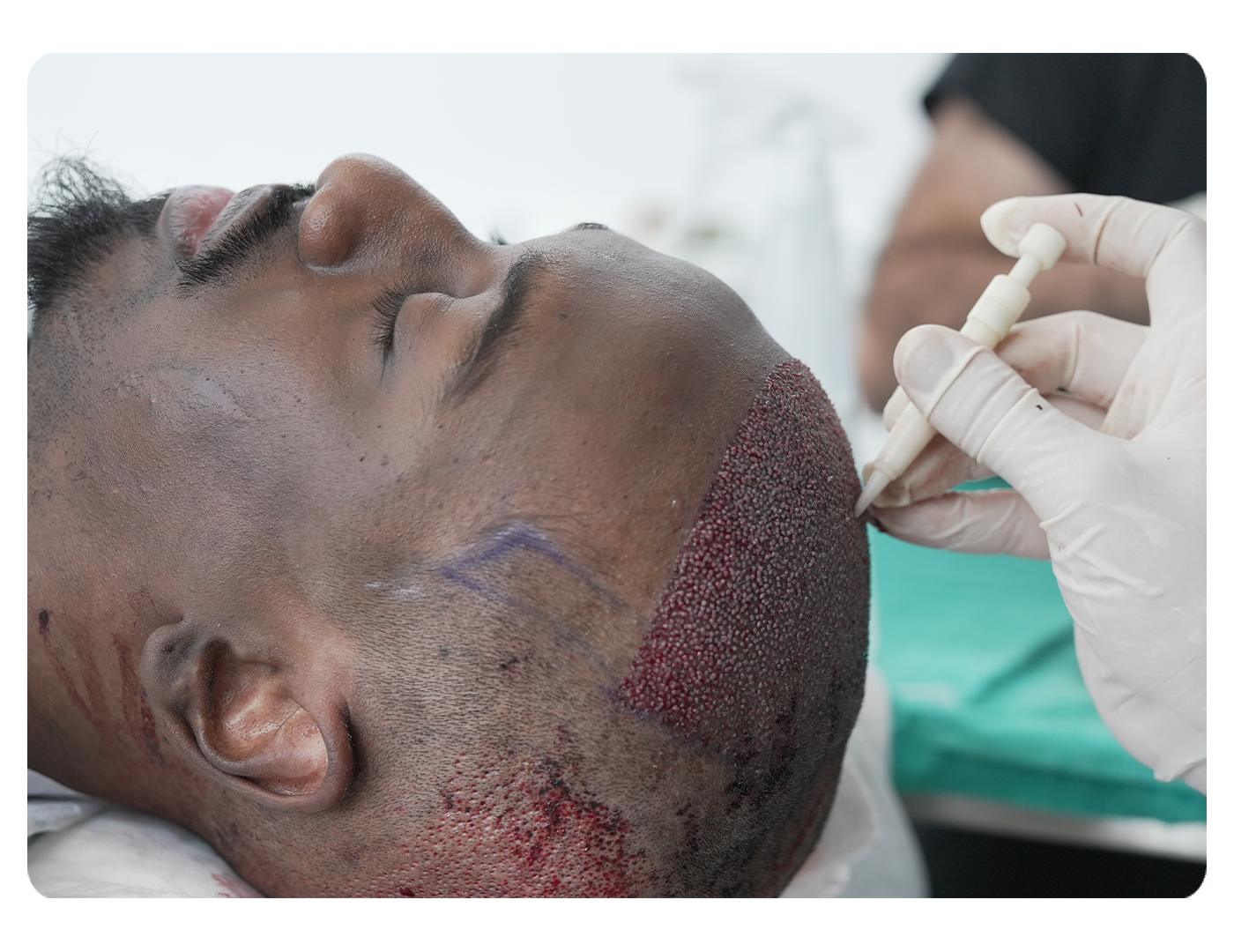
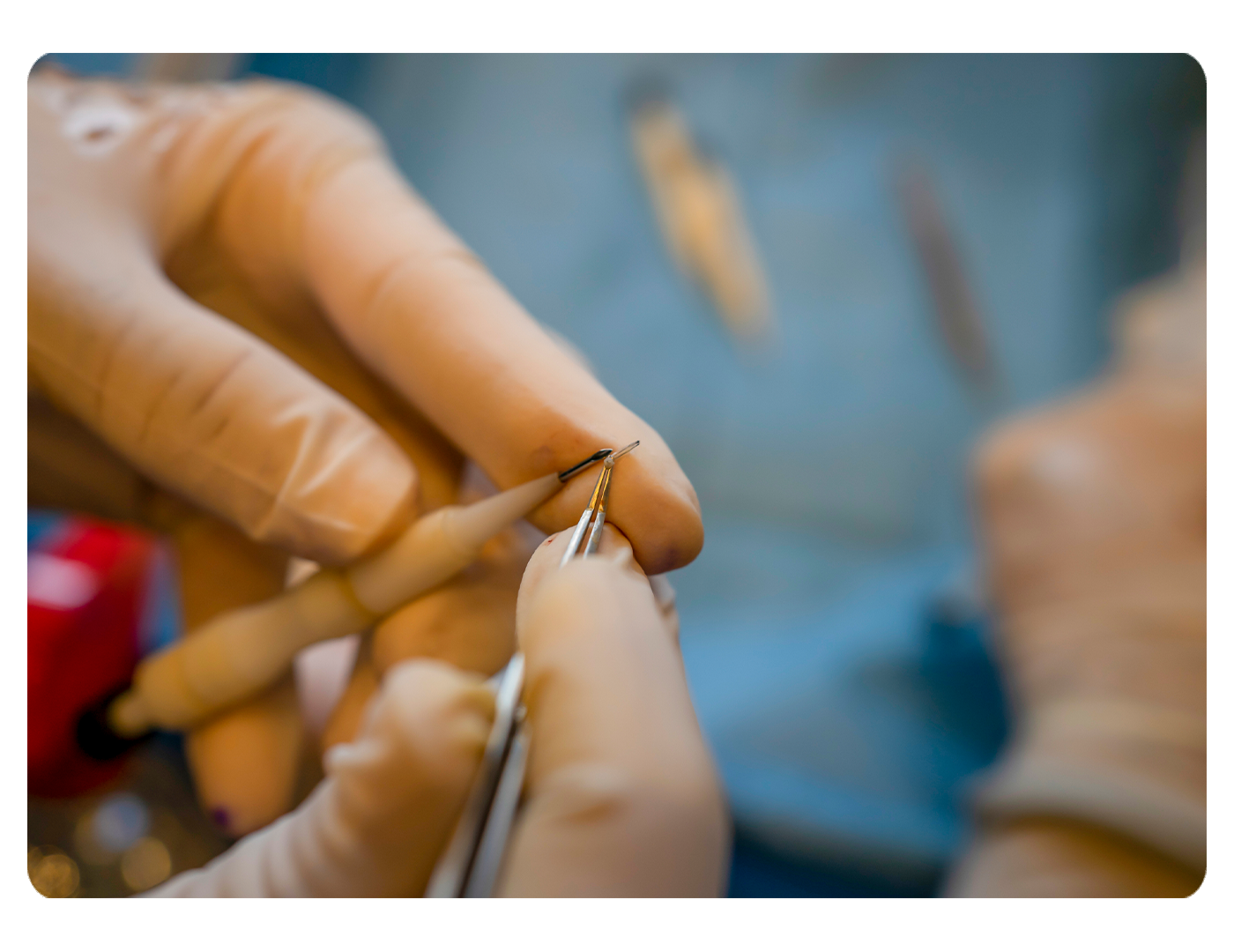
- Placement précis des greffons : La DHI permet un contrôle précis sur l'angle, la direction et la profondeur de l'implantation des follicules pileux, ce qui donne une ligne de cheveux d'apparence naturelle.
- Moins invasive : La DHI implique une manipulation minimale des greffons et ne nécessite pas la création de canaux sur les zones receveuses au préalable.
- Pas de scalpel : La technique DHI n'implique pas de scalpels, ce qui entraîne moins de cicatrices et un temps de récupération plus rapide.
- Taux de survie des greffons plus élevé : Comme les greffons sont implantés immédiatement après l'extraction, leur taux de survie peut être plus élevé par rapport aux techniques où les greffons sont stockés avant l'implantation.
- Adapté à divers types de cheveux : La DHI peut être utilisée pour différents types de cheveux, y compris les cheveux bouclés ou ondulés, car l'implantation précise permet des résultats naturels.
- Technique unique : La technique d'Implantation Directe de Cheveux (DHI) est un peu plus complexe que les méthodes de base de greffe de cheveux, nécessitant des médecins et une équipe spécialisée avec une formation et des compétences spécifiques.
- Quantité de greffons limitée : En raison de la nature sensible au temps de la procédure, la DHI pourrait ne pas être idéale pour de très grandes sessions de greffons en une seule séance.
- Coût plus élevé : La technique avancée et l'expertise requise entraînent un coût plus élevé par rapport à d'autres méthodes de greffe de cheveux.
- Durée prolongée du processus : La réalisation de la DHI prend du temps car chaque greffon doit être placé très soigneusement.
- Résultats basés sur les compétences : L'efficacité de la méthode DHI dépend beaucoup des compétences et de l'expérience de l'équipe médicale. Cela peut entraîner différents niveaux de succès lorsque différents praticiens utilisent la méthode.
Frequently Asked Questions
The hair grafts are extracted from the backside of the head, which we determine as between two ears and above the neck. The reason for choosing this specific area as a donor (extraction zone) is that the hair grafts in this region are genetically encoded against inherent hair fall. If the extraction process from this region is performed with better quality artistry, hair fall will never occur for a lifetime. Therefore, we take the hair grafts from this region.
The implanted hair may fall out within 2-3 weeks after transplantation. This is a normal process. New hair will begin to grow approximately 3-4 months later, and you can see the final results after 6-12 months. Complete growth can take up to 18 months.
No, the implanted hair generally does not fall out again. Hair extracted from the back of the head is genetically resistant to hair loss and remains permanent. However, existing natural hair may continue to fall out with age, so additional transplantation may be necessary if needed.
The surgery is performed under local anesthesia, so there is almost no pain during the procedure. There may be mild discomfort or swelling after surgery, but this can generally be managed with mild painkillers. Most patients can return to normal activities the day after surgery.
You are welcome to come with your family. There may be an additional charge for companion accommodation, but this is optional. It may vary depending on the accommodation package, so please check the details when making a reservation. Generally, all services are included for one patient.
The operation time varies depending on the number of follicles to be transplanted. Generally, 1000-2000 follicles take 4-6 hours, 2000-3000 follicles take 6-8 hours, and 3000 or more follicles take 8-10 hours. The surgery is completed in one day, including rest time.
